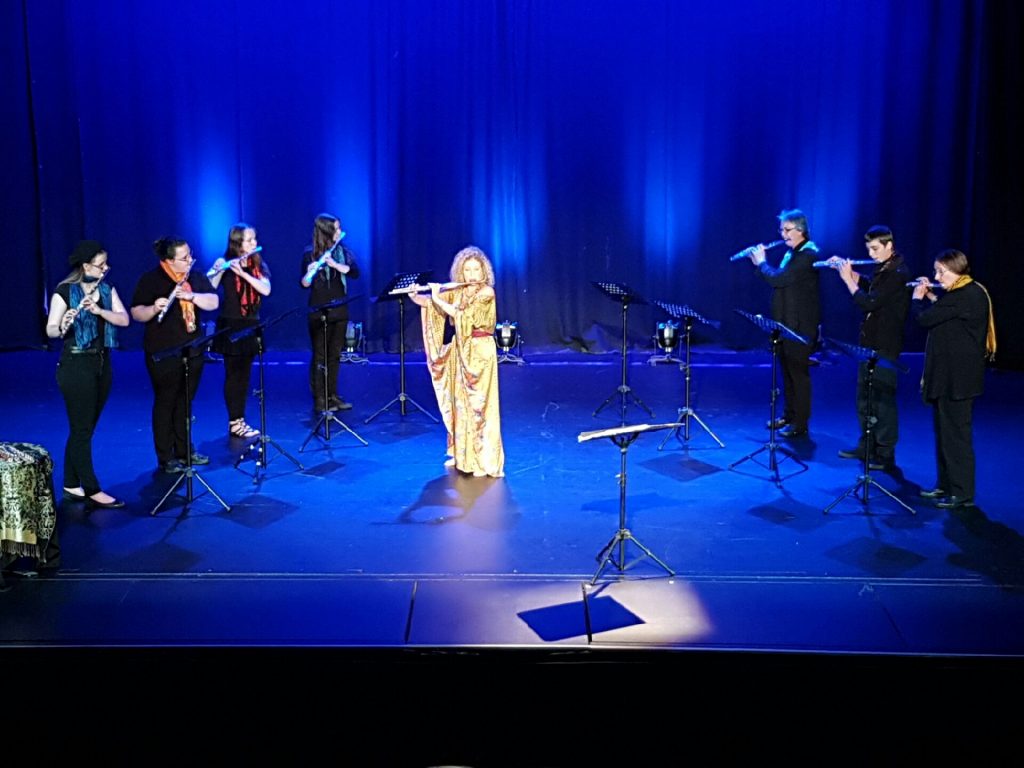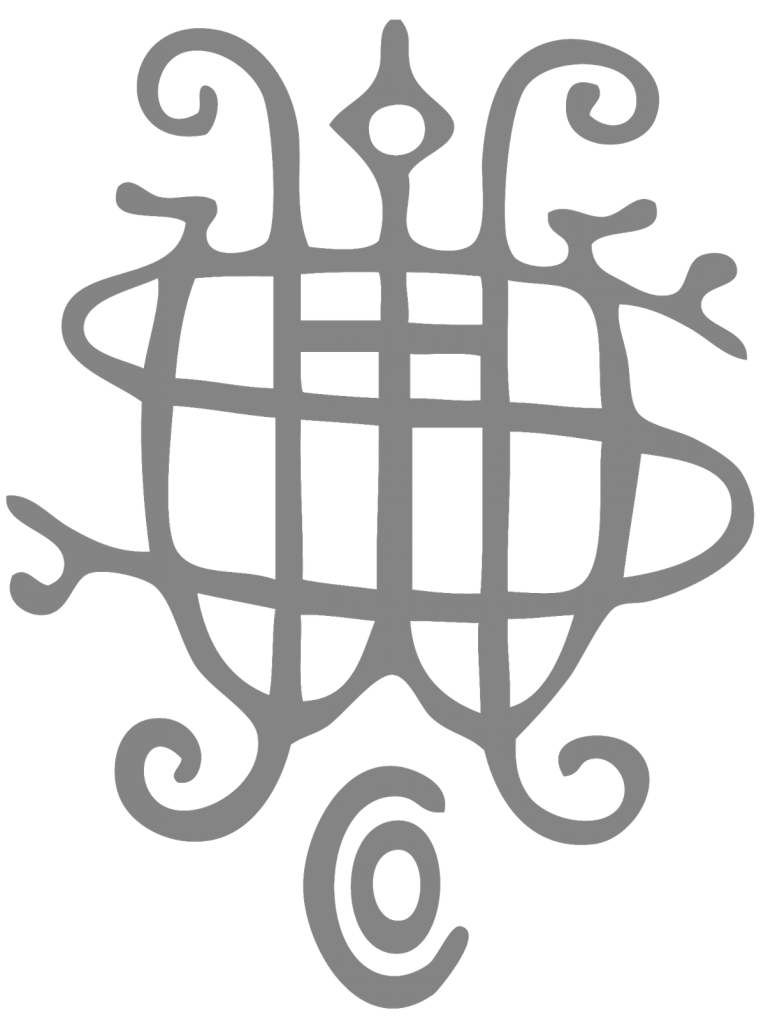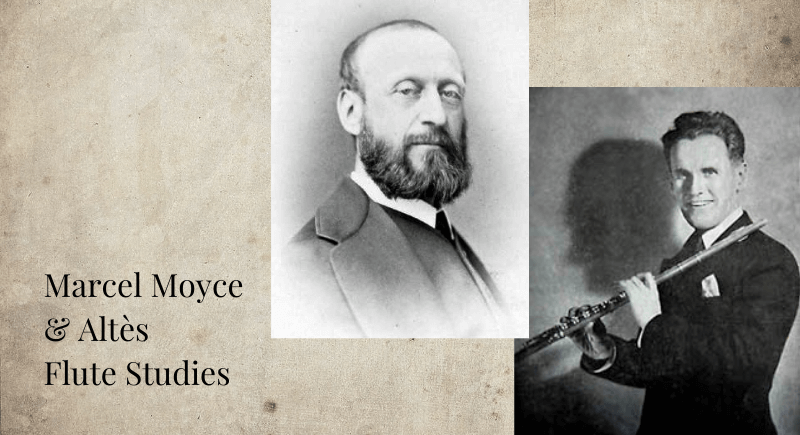
French flute sound: French Flute Practice Techniques. Marcel Moyse & Altès Flute Studies.
It is paramount to me to have a beautiful flute sound: one that represents all the inflections of the human voice, as did my mentor, Jean-Pierre Rampal. Students often ask me how I make my sound and I often reply, ‘it’s because I’m not shouting through my flute’. A sound that is flexible, and that changes in the way conversation changes, conveying tenderness, passion, excitement, calm, and a myriad of other emotions, is the one I seek.
For me there are secret ingredients in the production of a good flute sound:
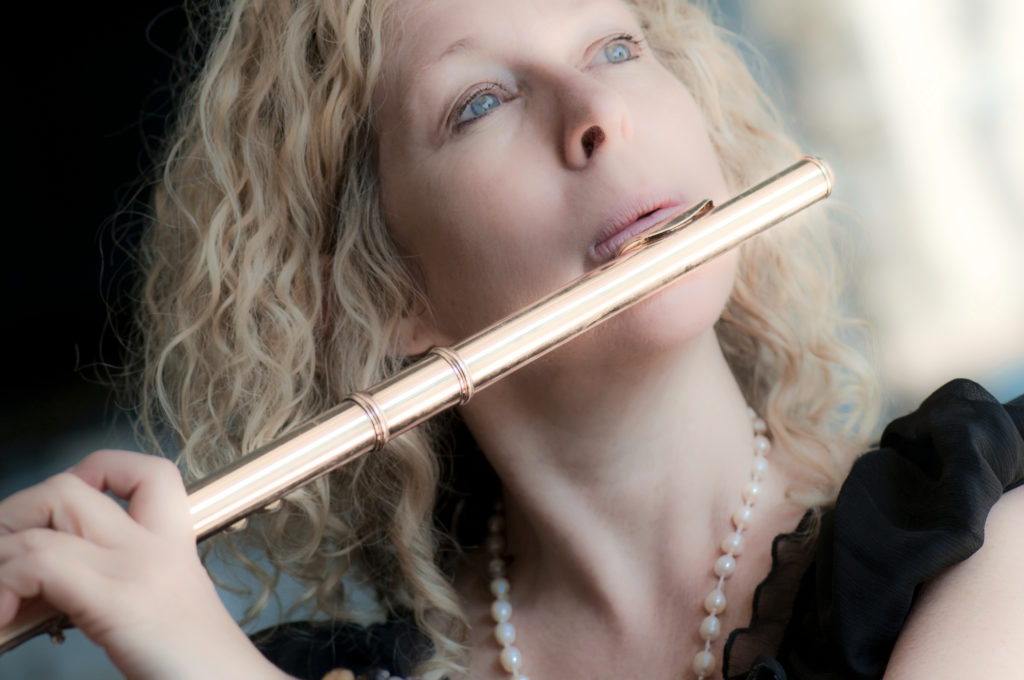
- Always play with communicative intent.
- Focus on the colours you wish to convey.
- Follow the vocal line and the narrative in the music.
- Play as if you’re talking to someone you love!
- Connect your sound to your heart-centre.
On a technical level my advice for an effective practice routine is:
- Spend a significant amount of time on flute sound and tone development. This should be done at the beginning of practice. A ‘solid gold’ for me: Marcel Moyse’s ‘De la Sonorité’ exercise 1, covering the entire range, including ascending from the lowest note on the flute, to the top note and back down to the note on which you started. (I only repeat each two-note phrase if I’m dissatisfied with the first attempt). The great soprano Joan Sutherland once said to me: “I know exactly where each note lives in my body because I practice vocalise incorporating each note every day”… For we flute players it’s important the starting note is in the second octave (B was Moyse’s best note, “start with the most beautiful note”, he said). To produce this note you need proper support. This exercise sets up your entire practice properly. Take delight in it! Once truly familiar with it, you can use it as a basis for tone practice between more than two notes; also in pieces that are proving difficult from a sonority point of view; also as a basis to extemporise.

[wp-video-popup video=”https://www.youtube.com/watch?v=lClBLu0_pQ4″]
Jane Rutter Flute Lesson: Sound & Art of Sonority Exercise 1
Then play other slow interval exercises based on 5ths, octaves & 10ths, joining the sound and playing musically – as if you were performing a beloved piece.
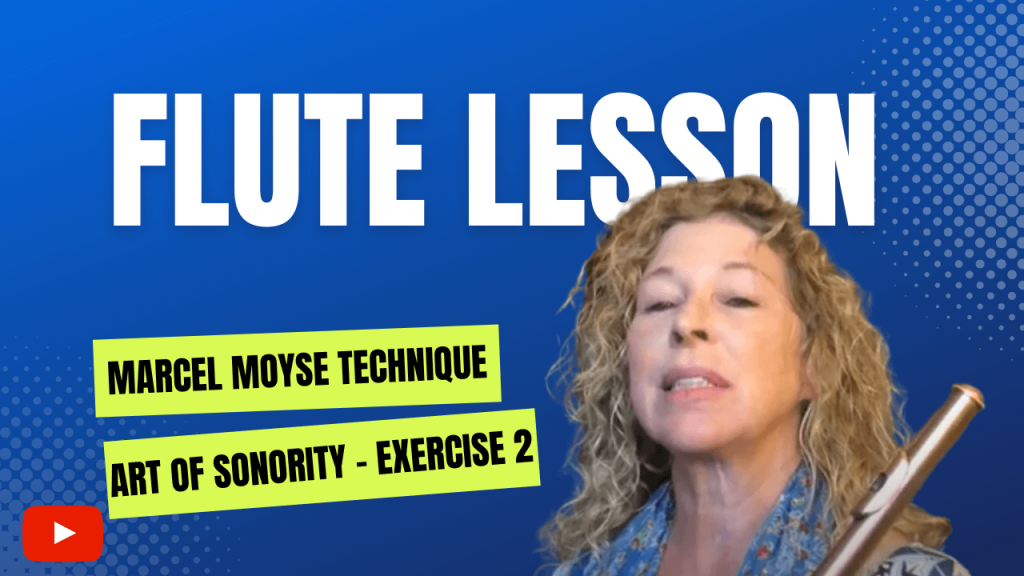
Jane Rutter Flute Lesson: Sound & Art of Sonority Exercise 2
Of course it’s important to be able to play without vibrato, on demand, however it is my firm belief that in the practice of the sound, musical expression and vibrato should be present. Also play some beautiful slow pieces / phrases [ e.g from Moyse’s ‘Tone Development Through Interpretation’ or similar. ] Turn yourself on with the sound and the music!
- Fast finger exercises (think Taffanel et Gaubert 17 ‘Grandes Exercises Journaliers de Mécanisme’ 1, 2 & 7 [or similar], Moyse’s ‘Exercises Journaliers’, Reichert’s ‘7 Daily Exercises’ & others) – also over the entire range. Make sure the notes connect through the flute sound with no gaps. (Tip: play each phrase/group of notes four times: twice fortissimo and twice pianissimo).
- Practice all the main articulations, ie: various detachés, (1) Hu (no tongue) (2) Tu, (3) Ku, (in France 2 & 3 are known as the first & second syllables), slurred, double and triple tonguing in simple (no notes repeated), and complex (each note repeated) over the entire range.
- Scales in thirds, fourths, fifths and sixths, mainly slurred but with varied articulations.
- Arpeggios – in many different forms, mainly slurred but with varied articulations.
All of the above played on a daily basis
Not always starting on the downbeat. Moving the bar-line a semi-quaver or more can be invaluable for stability of technique.
After the above, practice pieces and studies alternating the order every day.
Altès Méthode Complète de Flûte
There is no doubt that if you can play the ‘Altès Méthode Complète de Flûte’ 2nd Book of studies properly, its exercises and recommended flute repertoire (see image 1), then you can truly play the flute. Jean-Pierre Rampal, Alain Marion, & Raymond Guiot all reiterated this during my years of study with them.
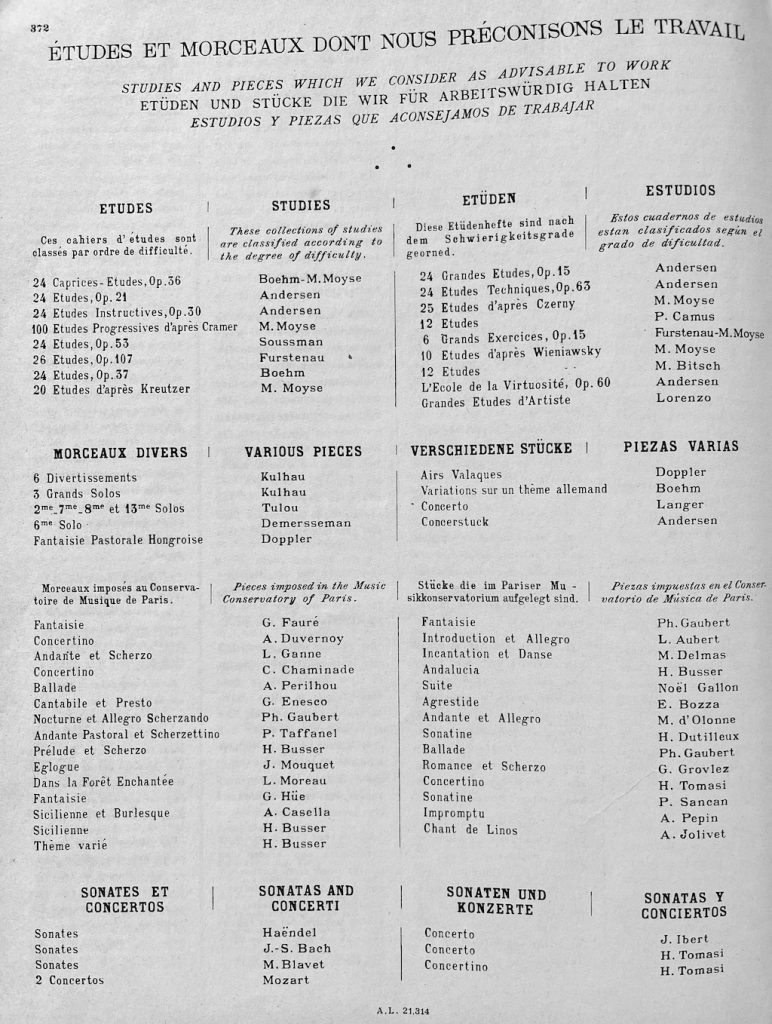
The aim is to be able to play each flute study twice through without stopping, without mistakes and at the tempo suggested.
Each study meticulously deals with a particular aspect of flute playing that is difficult, and so focusing on each of the 26 studies for a week (or two) at a time means that you are ironing out any issues with that aspect.
(Of course, I am not talking about extended flute techniques here – for that you will need to pursue other methods).
The Altès studies are musically satisfying and charming. The French edition by Éditions Alphonse Leduc in which there is a second flute part for the teacher to play along with the student, and vice versa is recommended, and is invaluable in terms of intonation, technique and musicality.
As an alternative to the routine mentioned above, Altès recommends that during the week of practising a particular study, you should especially concentrate on the technique of the tonality of that study in all your scale and arpeggio practice. (See Image below).
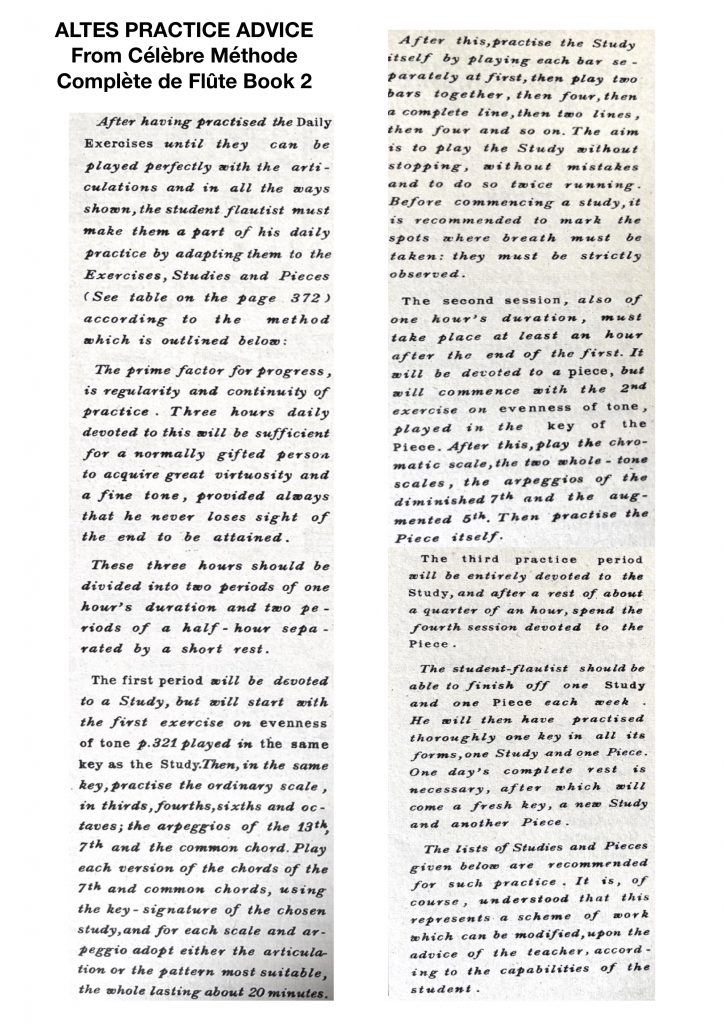
With every flute student I have had, as an initial step and after they have mastered Book 1 or its equivalent, I insist upon a weekly diet of the Altès book 2. Many of my students have achieved professional status.
After my car accident (coma, cracked ribs and a couple of months off flute playing), it was the Altès book 2, (playing 1-2 studies per day as prescribed above), which pushed me through a ‘ring of fire’ to get me back into shape.
I have devoted my life to pushing the boundaries of French flute playing within the bel canto French style – I reiterate the credo of the school, that anything that is possible with the voice is possible on the flute…
Over the past 15 to 20 years through various concerts, presentations, recordings and lectures, I have presented a new take on the history of the flute from an anthropological point of view.
Noting that (as an artefact) the flute is the earliest instrument known to man, dating back some 40,000 years, this thread of the flute is present throughout history. Various flute gods and deities, (Pan, Krishna, Kokopelli and many more), and different types of flutes are found all over the world.
Anthropologists believe the voice of the flute was a tool of communication for early man before language became sophisticated. Great works of art and music have reflected aspects of the flute’s place in history (Prélude à l’après-midi d’un faune by Debussy being a prime example).
I have presented this material in concerts, across social media and in papers over the past decades, with much of the work has gone under the title ’Flute Spirit’.
La Vième Convention de la Flûte Francaise, 2016 borrowed this title ’Flute Spirit’ as its own title with my permission.
With all of this in mind, it comes as no surprise to me that the great French school of flute playing (particularly the Rampal school) views the flute as a second voice.
Pan is the demigod of the flute, and the word Pan implies everything. I praise and encourage all flute players to find the voice within, and to share the narrative of their flute with the world.
© Jane Rutter
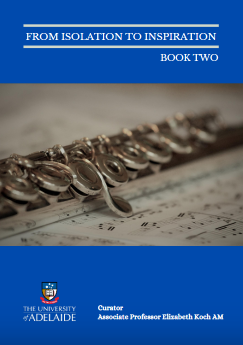
From Isolation to Inspiration, Book Two
Much of this material was also published in the Elizabeth Koch Online Flute Book in which you will find invaluable practice advice from my wonderful flutist colleagues.
I am available for online lessons & advice.
